Difference Between Polished Concrete Vs Grind and Sealed Concrete
Polished concrete floors are a popular choice for commercial and residential flooring. Exposed concrete floors not only look great but are also very durable, long-lasting and affordable. They are ideal for many applications, including homes, businesses, warehouses and retail spaces. You can also choose the finish you want for your refinished concrete. It can be a low-sheen or high-gloss that looks like glass.
Many flooring companies offer polished concrete or grind and seal concrete floor if you’re looking for exposed concrete flooring for your home or business. Many clients wonder if sealed or polished concrete is better for their projects. What’s the difference? Both polished concrete and sealed concrete floors can look nearly identical. Many consumers need to learn the difference between polished concrete and sealed concrete floors. This can lead to confusion when you request quotes or gather information about your project.
Polished Concrete And Sealed Concrete Seem Similar But Quite Different
The appearance of sealed concrete floors and polished concrete floors is almost the same. Contractors may need help to distinguish between the two systems at first. The process that gives the concrete shine/finish is entirely different. Polished concrete takes more work and requires more steps than grinding/sealing concrete floors.
Let’s quickly compare the two processes. Concrete polishing is the mechanical process of polishing concrete slabs using floor grinders equipped with industrial diamonds. The concrete is polished and honed using finer grits with diamond abrasives until it reaches the desired level (either level 1 or high gloss). A topical sealer is used to give the concrete seal its facade. This process is more straightforward and requires less grinding, honing and polishing. Polished concrete offers more benefits and durability, particularly in high-traffic areas. As an affordable alternative to polished concrete, we recommend sealing concrete.
Continue reading about the main differences between concrete polishing and grinding concrete floors. These include price, appearance, durability, and cost difference.
1. APPEARANCE
It can be challenging to tell the difference between sealed and polished concrete, as they may look nearly identical. The finish of polished concrete floors and grind/seal concrete floors may be matte, satin or glossy. The unique process of achieving a gloss, matte, or satin finish is impossible with other concrete floors. Polished concrete is achieved using finer grits with diamond abrasives to polish it until it reaches the desired level (Levels 1-4). Sealing concrete is done with a topically applied sealer.
The second difference in appearance is that grind/sealed concrete appears more consistent from one concrete floor to the next. High-performance sealers are compatible because they do not depend on concrete’s profile like polished concrete. This is an excellent advantage for anyone who wants to match sealed concrete floors throughout their home. The final look of polished concrete can vary significantly from one concrete to another. Each concrete floor presents a unique canvas; other factors, including hardness and imperfections, can impact the final result.
You can apply colour stains to polished concrete floors as well as grind and seal concrete floors. Both polished concrete and sealed concrete are known as “stained concrete”. Discuss this with your concrete flooring company if you request a stained concrete floor.
2. DURABILITY
Your flooring contractor should be able to assess the space of your project and determine the concrete levelling Melbourne of durability you want. Are there any areas that are prone to traffic? Foot traffic, forklift traffic, etc.)? Are there any spillages in the area?
Polished concrete is long-lasting and durable. It also includes the benefits of hardening, densifying, and dust-proofing. Because it is resistant to scratches and requires little maintenance, this system is ideal for high volumes. When properly maintained, it can last for many decades. Your surface will need to be sealed annually with concrete, depending on how much traffic it receives. This can be more costly than polished concrete for larger spaces.
You will find stains, oils and grease in these areas:
Sealing floors with a grind and sealer helps protect them from oil spillages, grease, stains, and urine. These concrete floors can be sealed with chemical-resistant polyurethane sealing agents if necessary. This allows for easy cleaning of colours that can otherwise cause permanent damage to other flooring systems. This is especially useful for commercial restrooms. Sealing concrete in bathrooms is good if the restaurant uses polished concrete throughout. Combining polished and sealed floors will give the restaurant a cohesive look and offer the best of both systems.
3. Cost
Concrete polishing requires more work and is more expensive than grinding/sealing or burnished concrete. We recommend you choose between grind and seal concrete or burnished concrete if you want polished concrete floors.
What are Grind and Sealed Concrete Floors
The process of grinding and sealing concrete is precisely the same as its name. This involves grinding concrete and stuffing it with a top-quality sealer.
These are the steps to grind and seal concrete:-
- This involves grinding concrete using engineered concrete floor grinders to remove contaminants from the slab.
- The floor is then patched as needed with patching material.
- Your floor goals (i.e. The floor may be ground with finer diamonds depending on the desired finish and durability requirements. A second pass is unnecessary if the concrete is hard, porous, or free from contaminants.
- The surface should then be properly cleaned.
- A stain colour can also be added to the concrete’s grind and sealed. You can choose from various colours, from neutral to earthy tones to bright concrete dyes.
- Finally, seal your concrete floor with a top coat. Your concrete flooring company can recommend the correct type of sealer depending on your needs, space and floor goals. Multiple coats may be required for porous concrete that is soft. This is common in residential areas.


